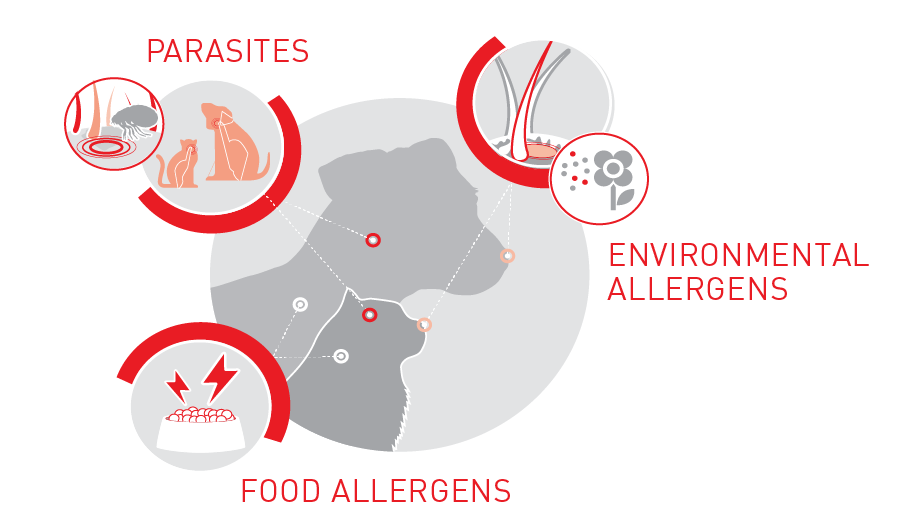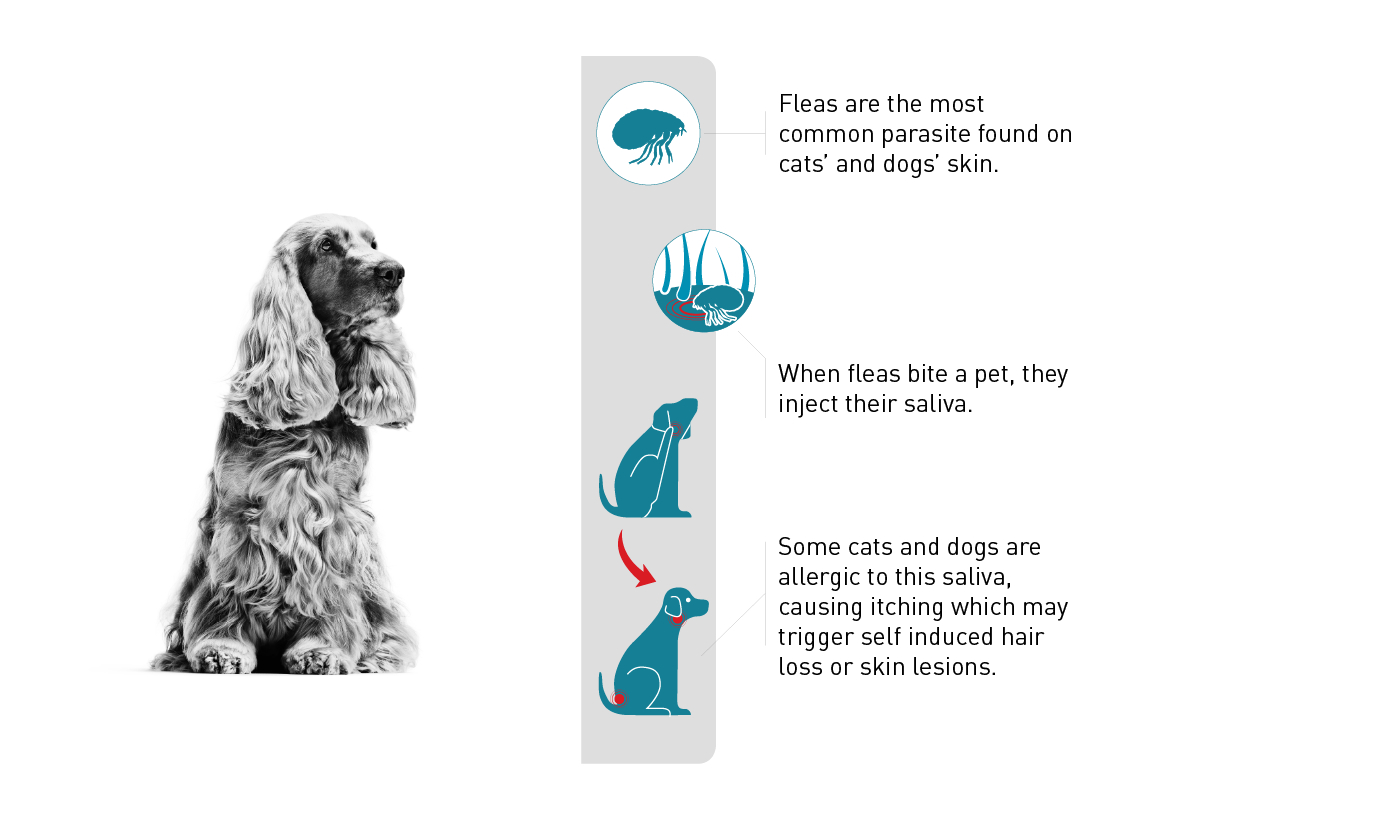HEALTHY SKIN COMES FROM WITHIN
Dermatological issues are a significant health concern for both pet owners and veterinary staff.*
In Australia, over two million pets suffer from dermatological issues.**
Skin issues are the 2nd most frequent reason for visiting vets - resulting in nearly 1 out of 5 pets being affected.
*Source: Hill PB, Lo A, Eden CAN, et al. Survey of the prevalence, diagnosis and treatment of dermatological conditions in small animals in general practice. Vet Rec 2006; 158:533-539.
**Euromonitor pet population report & internal CMI Quant study on 14 Countries, n: 8547 pet owners.
SOURCES OF SKIN ISSUES IN DOGS
Itching, scratching and biting are the first symptoms of skin disease that you may notice in your pet and they are often a sign of what’s going on beneath your pet’s skin. See some of the sources of skin issues in pets below:

PARASITES
External parasites such as fleas, ticks and mites can take up residency on your pet through a variety of ways. These external parasites can be very irritating for pets, leading to skin reactions like itching and hair loss.FOOD ALLERGENS
In the case of food allergy, the immune system mistakes normal, large dietary proteins as harmful substances and reacts against them, triggering a food allergy. The allergic reaction may result in symptoms such as itching, skin inflammation, loose stools or vomiting.ENVIRONMENTAL ALLERGENS
Pets, just like humans, can react to environmental allergens such as pollen or dust. These allergens can cause skin redness, scratching, rashes, and chronic ear infections.
WHAT IS FLEA ALLERGY DERMATITIS?
In Dermatological cases where a clinical assessment is required, checking for parasites can be the first diagnostic test undertaken by veterinarians. Such parasites can include fleas, ringworm and other bacteria. In cases of flea allergy dermatitis in dogs, see below for more information:

WHAT IS ENVIRONMENTAL ATOPIC DERMATITIS?
Often the most difficult to diagnose, and as such is typically tested for in dogs once they have been screened for parasites and treated for any skin infections to reveal any further triggers. See more information below on possible environmental triggers for your pet:
THE ROLE OF NUTRITION IN A MULTI-MODAL APPROACH TO TREATING ATOPY
Atopy or Atopic Dermatitis is a very common condition among dogs and cats. While there are certain breeds, such as West Highland White Terriers and Golden Retrievers, as well as pure breed cats such as Abyssinians & Devon Rex, that may be more predisposed genetically, it can occur in any individual where there is an allergic reaction to environmental allergens such as pollen, dust mites, grasses & moulds.
This type of reaction is a delayed reaction that usually causes itchy skin, which can lead to skin redness as well as secondary bacterial or yeast infections due to the traumatic scratching that follows. It can be seasonal and usually worse in warmer weather but can also be year-round depending on the conditions and specific allergens.
Affected areas are often places where skin movement occurs, such as joints in the feet, elbows, armpits & groin as well as under the tail, around the eyes and mouth. Often it can cause irritation to the ears, which may manifest as head shaking or scratching at the ears, or “bottom scooting” due to irritation of the anal glands.
These pets may start to show signs around one to three years of age, sometimes earlier, and your veterinarian will need to rule out other causes of itchy skin such as fleas, mites & other infections. Allergies to food while much less common than Atopy, should also be excluded by doing an elimination diet trial.
Atopy, just like allergies in people, cannot be cured and will require lifelong management. Sometimes it is very difficult to avoid the trigger, so medication and topical treatment may be required to dampen down the abnormal immune response and reduce the inflammation in the skin.
We know the skin barrier of these affected pets is also compromised, which means that the defence mechanism to keeping allergens out and moisture in, doesn’t function properly, leading to dry, itchy skin.
Nutrition can also assist in managing Atopic patients by supplementing nutrients such as essential fatty acids to help soothe sensitive skin, amino acids to support cell repair and growth and specific nutrients to support the natural protective barrier function of the skin.
Speak to your veterinarian about how nutrition can form part of a treatment plan if you think your pet may be Atopic.
DISCOVER ROYAL CANIN® SKIN SUPPORT FOR ATOPY
ROYAL CANIN® Skin Support is scientifically formulated to help assist dogs suffering from atopy and skin disease.
Concerned your dog may be suffering from atopy or skin disease? Speak to your veterinarian today to see if ROYAL CANIN® Skin Support is best for your pet.